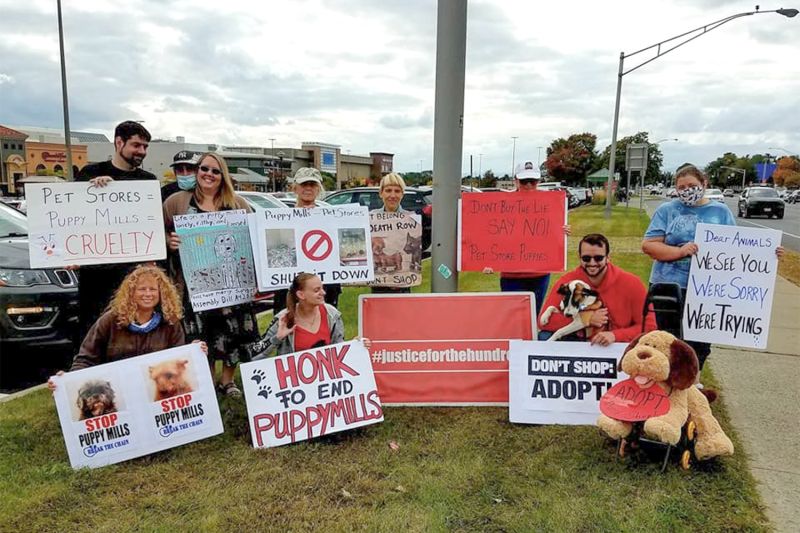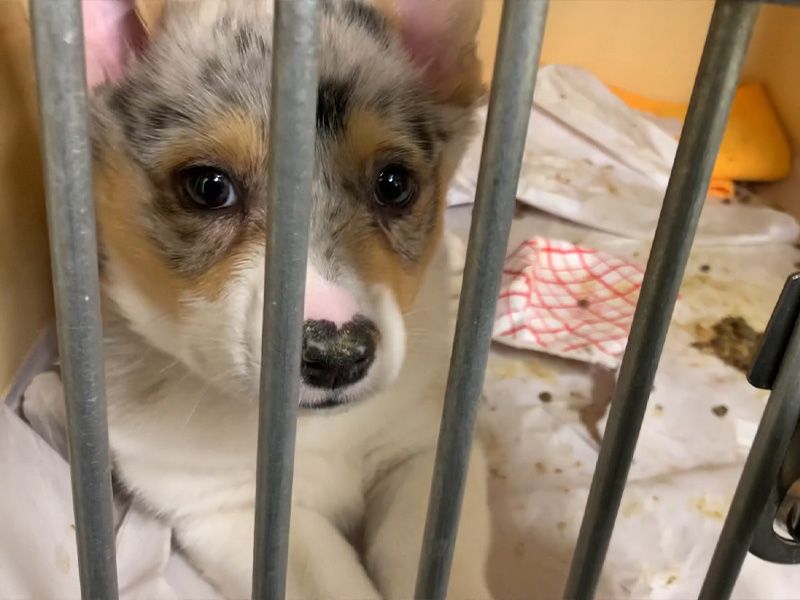Blog: How shelters and rescues helped end pet store puppy sales in New York
‘Gradually, then suddenly’ the battle was won
August 13, 2025

During the winter holidays last year, the streets of New York looked slightly different. From Albany to Buffalo to New York City, dog lovers and their pups were still plentiful at parks and coffee shops. But gone were signs advertising holiday puppies for sale and shop windows filled with puppies.
“Gradually, then suddenly” is Ernest Hemingway’s phrase that describes a slow buildup, followed by an abrupt shift. That’s how ending the sale of pet store puppies in New York felt to me and many of my colleagues.
For years, we fought for the dogs. Dozens of shelters, rescues and individual advocates joined the Shut Down the Puppy Mill Pipeline campaign, championed by the state’s leading animal protection organizations, including Humane World for Animals (formerly called the Humane Society of the United States), the ASPCA and the New York State Animal Protection Federation. Together, we implemented a multipronged approach to end the flood of thousands of puppies trucked into New York each year from the “pipeline” of mass breeding mills, brokers and transporters.
When animals are suffering in the here and now, change never seems to happen fast enough. But with perseverance and partnerships, we can change laws and have a lasting impact. Here’s how it happened in New York.
The battle for New York
In 2011, when Humane World published our first report on New York pet stores, more than 100 retailers in the state were selling puppies. Nearly all of them were sourced from commercial mass breeding facilities.

Most of the stores were in and around New York City. In response to our report and pressure from local advocates, the city’s policymakers passed a puppy sourcing law and pet store health care rules. It was the strictest ordinance the city could enact at the time, but the laws were often ignored or the paperwork fudged.
Then in 2017, our undercover investigator was hired to work at the Chelsea Kennel Club pet store in Manhattan. Our evidence of animal mistreatment, customer deception and sick puppies being sold led to a public outcry. The store closed within days.
In the following years, we continued to reveal the heartbreaking reality behind the cuddly-looking puppies in pet store windows. We spoke to heartbroken consumers who were duped into buying unhealthy puppies and urged them to file complaints with the state attorney general. We supported lawsuits against the stores. We released undercover reports and videos, and we provided hidden camera evidence to authorities that resulted in some stores being taken to court and fined for defrauding consumers and mistreating animals.
With all our successes, it seemed we were up against Goliath. By 2022, the number of puppy stores in the state had decreased, but 10% of all the puppy stores in the country were still in New York.
The power of many
During my nearly 20 years fighting against puppy mills, one of the most maddening and demonstrably false arguments I’ve heard is that the U.S. will run out of puppies if they can’t be sold in pet stores. Supporters of the puppy mill industry have repeated this claim in state capitols across the country.
After state Sen. Michael Gianaris and Assemblymember Linda B. Rosenthal reintroduced the Puppy Mill Pipeline Act in the New York legislature in 2021, they worked tirelessly to secure the votes needed to pass the legislation through all relevant committees. Our coalition held a series of press events, and the NYSAPF and its dozens of shelter and rescue members generated a groundswell of support for the bill. Through op-eds, media interviews and meetings with legislators, local shelters and rescues testified to the fact that their communities were already filled with dogs of all shapes, sizes and ages needing homes.
Their words had an impact, and in June 2022, the legislation passed both chambers with significant bipartisan support. Even then, we couldn’t rest. We knew that Gov. Kathy Hochul was being lobbied by the puppy mill industry to veto the bill.

For the next six months, shelter and rescue leaders appeared on local news broadcasts and generated a slew of emails and calls to the governor’s office. The NYSAPF delivered 2,500 postcards to the governor, each signed by New Yorkers in support of the legislation. After attending a rally at the Second Chance Canine Adoption Shelter in Jamesville, then-state Sen. John Mannion (now a U.S. House representative) posted online: “I met with my four-legged constituents today and they agree—it’s time to shut down the puppy mill pipeline in New York.”
Finally, it happened. On Dec. 15, 2022, Gov. Hochul enthusiastically signed the Puppy Mill Pipeline Act. A generous grace period gave stores two years to adjust their business models. Stores ramped up their pet food and product offerings, and some added in-demand services such as grooming to replace profits that used to come from selling puppy mill puppies.
The law went into effect on Dec. 15, 2024. Thus ended the flood of thousands of puppy mill dogs trucked into the Empire State each year.
Long-term payoffs
In the fast-paced world of sheltering and rescue, policy work can seem frustratingly slow. Time and again, a promising bill can fail to get over the finish line. But as we saw in New York, the work we do today can have big payoffs down the road.
When I started working for Humane World in 2006, no states and only one city (Albuquerque, New Mexico) banned the sale of dogs in retail stores. Today, thanks to the dedication of local advocates, shelters and rescues, and national groups led by Humane World, eight states and more than 500 localities have enacted bans. Many of these laws (including New York’s) also prohibit retail sales of kittens and rabbits, covering the three types of pets most commonly surrendered to animal shelters.
More laws are passing every year. Puppy and kitten mills are seeing their sales outlets (and profits) diminish.
With each victory in this battle, we’re steering more potential adopters to shelters and rescues at a critical time. A study by Shelter Animals Count found that 2.9 million dogs entered shelters in 2024, and nearly a third of them were puppies. There’s no shortage of puppies for Americans to adopt.
I encourage everyone who supports the lifesaving work of shelters and rescues to join our fight. Together, we will help more dogs in puppy mills, and by doing so, we will help more dogs in shelters. Gradually, then suddenly, change is on the way.

